Aerolito Cozumel
Protecting Aerolito Cenote: An Important Cozumel Natural Resource
Officials move to create a protected area for this ecologically important area..
Update: Since we originally published this article in 2017 El Aerolito has become a ““naturally protected area” (ANP), making it the 3rd in the state.
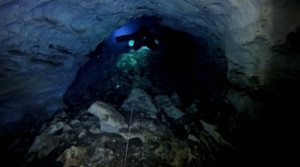 Because of it’s limestone composition, Cozumel hosts a large number of underground caves, or centoes, that are responsible for much of the island’s fresh water supply. As these fresh water systems discharge into lagoons and coves throughout the island they create a unique and important eco-system that literally can be found no where else in the world.
Because of it’s limestone composition, Cozumel hosts a large number of underground caves, or centoes, that are responsible for much of the island’s fresh water supply. As these fresh water systems discharge into lagoons and coves throughout the island they create a unique and important eco-system that literally can be found no where else in the world.
One of Cozumel’s most important Cenotes, El Aerolito, has recently gained much attention as environmentalists move to enact legislation that will preserve this area as a “naturally protected area” (ANP). Currently the State of Quintana Roo has only 2 such protected areas, but there’s hope that El Aerolito will soon be the third.
The Cenote El Aerolito has been reported to be over 68 meters or 233 feet. Since the area mixes salt and fresh water many unusual and unique forms of marine life have been documented including 23 species of echinoderms, new varieties of sponges and nearly all known groups of marine invertabrates.
In fact, back in 2004 island resident, and well-known Cave Instructor German Yanez is credited with discovering a form of sea star thought only to live in salt water. To date, German Yanez has spent nearly 30 years, training and assisting cave divers through this very unique and fragile micro-ecosystem.
Studied by cavern divers all over the world, the cave-system has been likened to “a natural replica of the sea at 3,000 M deep, in complete darkness” this important area has no regulation that limits the number of visitors, nor protects species from extraction. Many of the creatures found are completely blind or devoid of all pigment due to the complete absence of light.
Various environmental groups, municipal offices and even the University of Quintana Roo have drafted a proposal to create the 3rd nationally protected area in the state. While approval will require further process, including a lengthy study, it’s the first step in preserving El Areolito
Protección del cenote El Aerolito. Un importante recurso natural de Cozumel
Las autoridades proponen crear un área protegida para esta zona de importancia ecológica. . .
En virtud de su composición caliza, Cozumel tiene una gran cantidad de cuevas subterráneas o cenotes que se 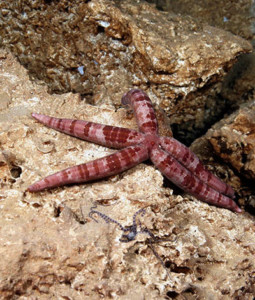 encargan de suministrar mucha del agua dulce de la Isla. Ya que estos sistemas vierten el agua dulce en lagunas y caletas a través de la Isla creando un ecosistema importante y único que, literalmente, no se encuentra en ningún otro sitio en el mundo.
encargan de suministrar mucha del agua dulce de la Isla. Ya que estos sistemas vierten el agua dulce en lagunas y caletas a través de la Isla creando un ecosistema importante y único que, literalmente, no se encuentra en ningún otro sitio en el mundo.
Uno de los cenotes más importantes de Cozumel es El Aerolito y en fechas recientes llamó la atención en virtud que los ambientalistas han propuesto que se apruebe una legislación para que esta área sea conservada como Área Natural Protegida (ANP). En la actualidad el Estado de Quintana Roo sólo cuenta con 2 áreas protegidas, y se espera que en breve El Aerolito se convierta en la tercera.
Se tienen reportes que El Aerolito tiene una longitud a 68 metros o 223 pies. Ya que en el área se mezcla agua salada con dulce, se han logrado documentar singulares formas marinas que incluyen 23 especies de equinodermos, nuevas variedades de esponjas y casi todos los grupos conocidos de invertebrados.
De hecho, en el año 2004 a German Yáñez, conocido instructor en espeleobuceo y habitante de la Isla, le fue atribuido el hallazgo de una estrella de mar que se creía que sólo habita en agua salada. A la fecha German Yáñez ha pasado casi 30 años formando y llevando buzos de cuevas a través de este microsistema único y frágil.
Este sistema de cuevas que ha sido estudiado por buzos dedicados al espeleobuceo en todo el mundo, ha sido comparado con “una replica natural del mar a 3,000 metros de profundidad, en total obscuridad”; esta importante área no cuenta con un reglamento que limite el total de visitantes ni tampoco protege las especies de su extracción. Muchas de las criaturas que ahí habitan están completamente ciegas o carecen de pigmentos debido a la ausencia total de luz.
Diversos grupos ambientalistas, oficinas municipales e incluso la Universidad de Quintana Roo, han redactado una propuesta para crear la 3ª área natural protegida del Estado. En tanto que la aprobación implica un proceso adicional, incluyendo un extenso estudio, este es el primer paso para preservar El Aerolito.
______________________________
Una ex yanqui de Connecticut quien llama hogar a Cozumel desde hace más de 15 años. Laura escapó al Caribe hace años, desplazándose de una isla a otra dando clases de BUCEO. Se dedicó a perder el tiempo en Jamaica y finalmente se detuvo en Cozumel para pasar unas vacaciones de 2 semanas que aún no terminan. Convenciendo a sus padres que pagaran una elegante universidad privada, obtuvo su título en Periodismo y Laura crea semanalmente Cozumel 4You, medios sociales y artículos promocionales sobre la Isla y también es moderadora en el grupo Cozumel 4 You en Facebook que actualmente cuenta con 25,000 miembros. Fabián, s umuy tolerante marido, desde hace mucho tiempo se resignó a no tener vida privada, pues se ha visto implicado en los diversos proyectos y planes que urde Laura. Son orgullosos padres de diversos perros y gatos rescatados. Mientras contempla su paso a través de la vida en el Caribe mexicano,Laura continúa siendo la pesadilla en la existencia de su muy tradicional suegra mexicana.
- Cozumel Museum - April 25, 2025
- Feria Cedral Schedule - April 25, 2025
- Cozumel Home Security Systems - April 25, 2025
An ex-Connecticut Yankee who has called Cozumel home for over 18 years, Laura ran away to the Caribbean years ago, bumped around the islands teaching SCUBA diving, lost some time in Jamaica, and finally stopped in Cozumel for a 2 week vacation that hasn’t ended yet. With a degree in Journalism from a fancy private college she convinced her parents to pay for, Laura writes, edits, and creates the weekly Cozumel 4 You news, social media, and promotional articles about the island, as well as moderates the Cozumel 4 You Facebook group, which currently has over 25,000 members. Her long suffering husband, Fabian, has long since resigned himself to having zero private life, as he’s been involved in her various schemes and plots since his arrival. Proud parents to a variety of rescue dogs and cats, Laura continues to be the bane of her traditional Mexican mother-in-law’s existence, as she muses her way through life in the Mexican Caribbean. ______________________________ Una ex yanqui de Connecticut quien llama hogar a Cozumel desde hace más de 15 años. Laura escapó al Caribe hace años, desplazándose de una isla a otra dando clases de BUCEO. Se dedicó a perder el tiempo en Jamaica y finalmente se detuvo en Cozumel para pasar unas vacaciones de 2 semanas que aún no terminan. Convenciendo a sus padres que pagaran una elegante universidad privada, obtuvo su título en Periodismo y Laura crea semanalmente Cozumel 4You, medios sociales y artículos promocionales sobre la Isla y también es moderadora en el grupo Cozumel 4 You en Facebook que actualmente cuenta con 25,000 miembros. Fabián, s umuy tolerante marido, desde hace mucho tiempo se resignó a no tener vida privada, pues se ha visto implicado en los diversos proyectos y planes que urde Laura. Son orgullosos padres de diversos perros y gatos rescatados. Mientras contempla su paso a través de la vida en el Caribe mexicano, Laura continúa siendo la pesadilla en la existencia de su muy tradicional suegra mexicana.
1 Comment
Leave a Reply Cancel reply
Feria Cedral 2025
Feria Cedral 2025 La Feria de El Cedral & La Fiesta de...
Cabana Beach Cozumel
Cabana Beach Cozumel The Cabana Beach Now Offers New Options, New Packages...
Cozumel Current News
Cozumel Current News Cozumel Current News Text & Translation by Moises JH...
Three Cozumel topics that may be of interest
Three Cozumel topics that may be of interest Three Cozumel topics...











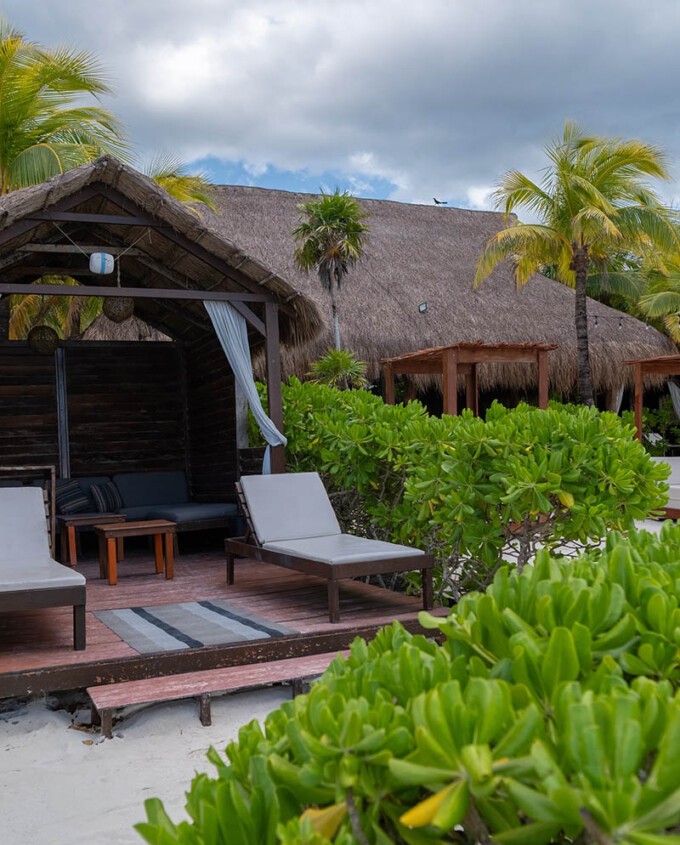
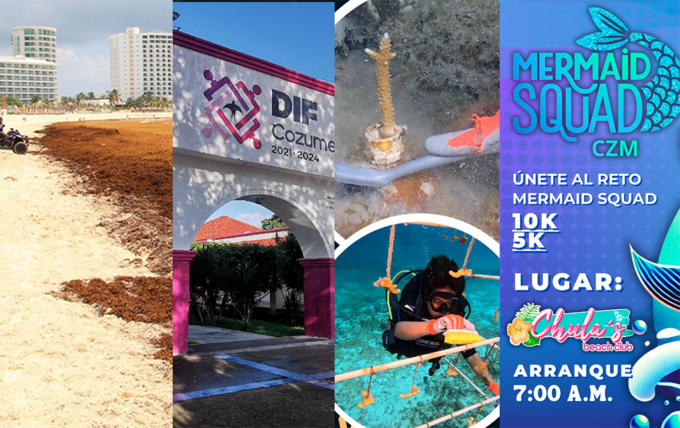




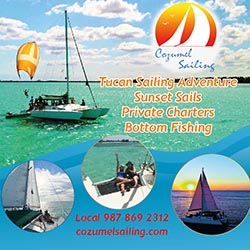



Hola! We love to snorkel and have snorkeled in several cenotes on the mainland. Are there any cenotes open to environmentally conscientious snorkelers on Isla Cozumel? Thanks in advance for your reply!